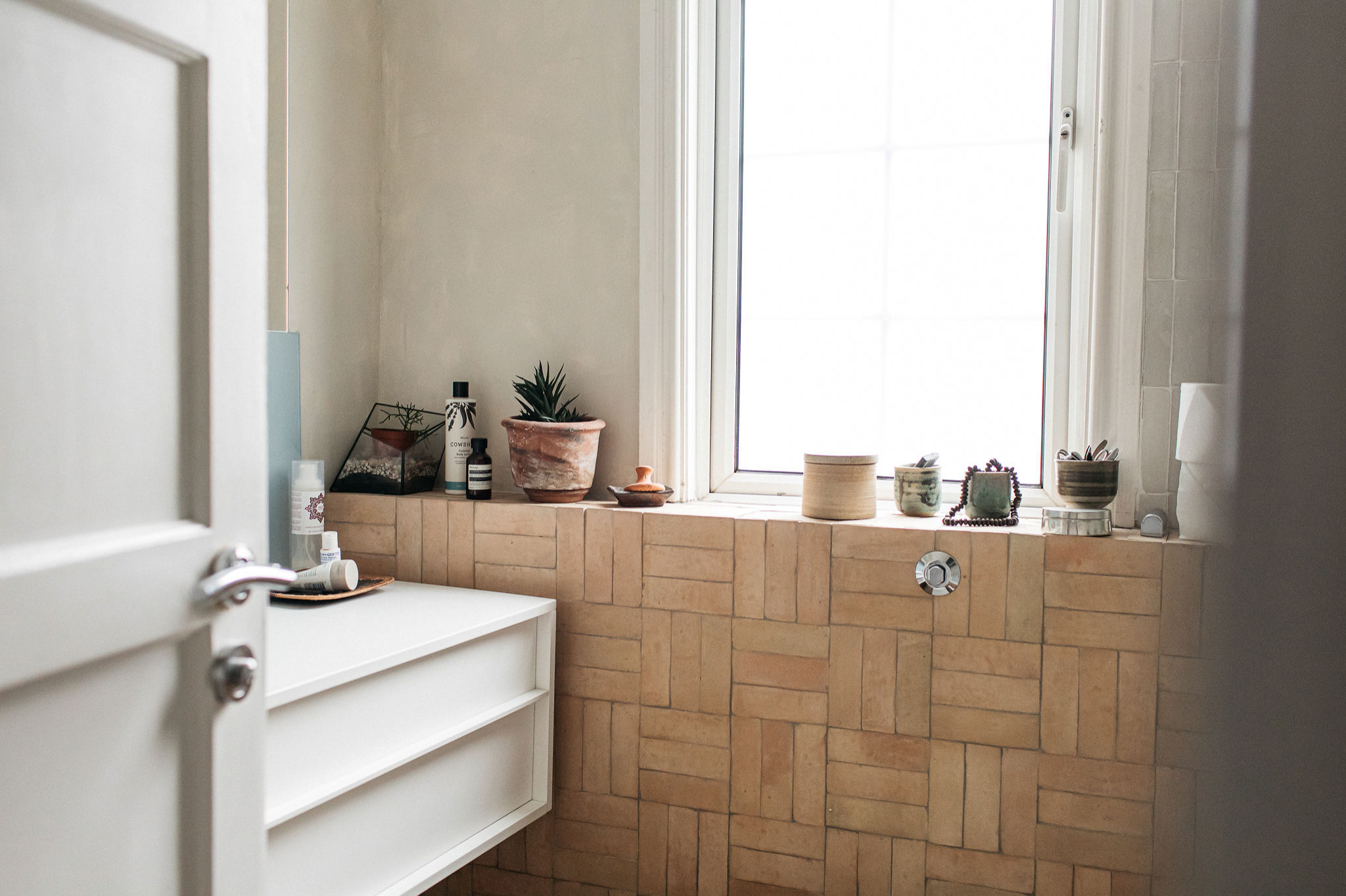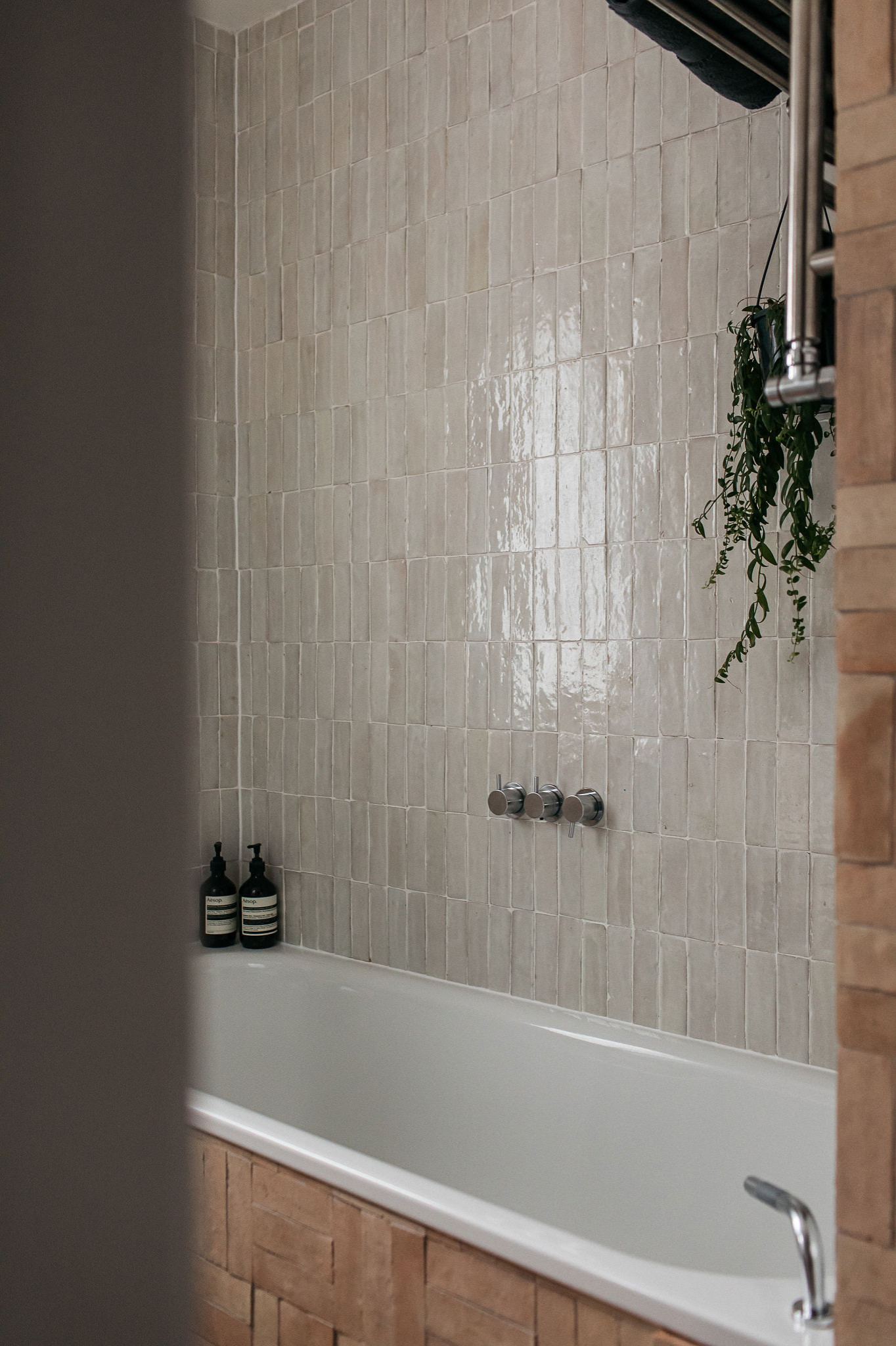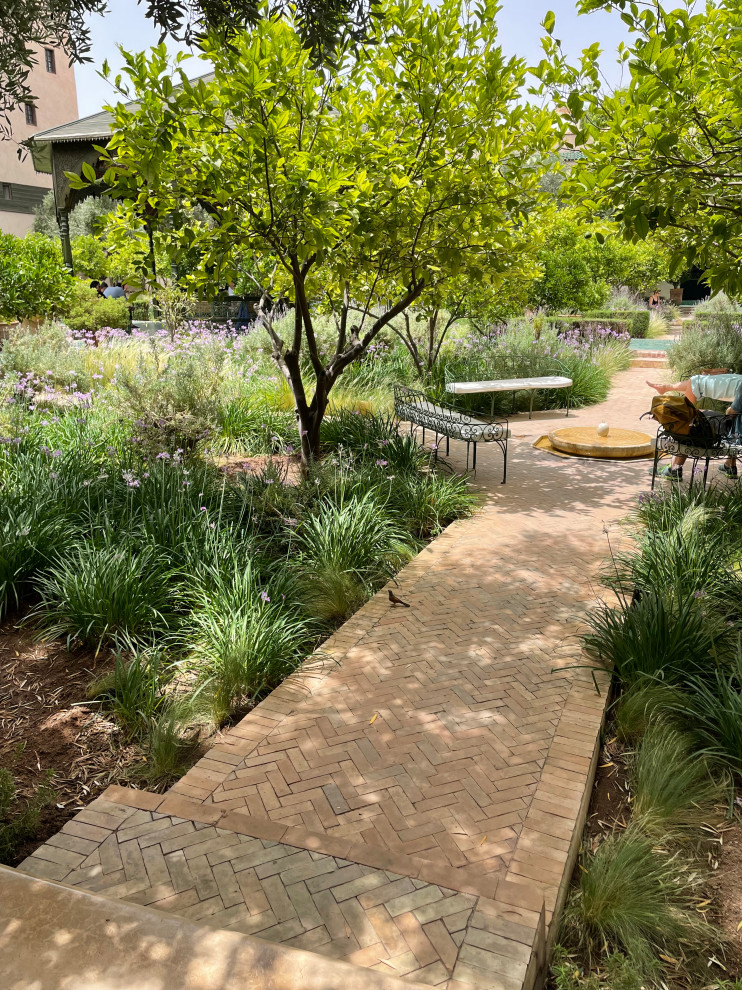Using Moroccan Tiles

Bejimat tiles offers a raw and organic feature to a family bathroom
Bejimat tiles are a type of ceramic tile that is often used in bathrooms for flooring, walls, and splash-backs. The ones shown here are unglazed and would require the installer to apply a thin coat of Sealant prior to fixing it to the wall ( see link below) to ensure they are waterproof.

White irregular Zellige tiles used with minimal white grout
To use them in a bathroom, you would typically install them using a thin-set mortar adhesive, which is applied to the back of the tiles and then pressed into place on the floor or wall. You can also use grout to fill in the gaps between the tiles and give the surface a finished look. The gaps are tight kept at a minimum unlike standard tiles.
Bejimat tiles are known for their durability and water resistance, making them a popular choice for bathroom surfaces. They are also easy to clean and maintain, which is another reason they are often used in bathroom applications.
When shopping for Bejimat tiles, you may want to consider the size, colour, and style that you want, as well as any additional features that you may need.
There are a variety of colours, styles and sizes available. They are often used indoors and outdoors in Morocco where I travel to regularly when I hold my inspiration design retreats. They have a rich yet raw patina which looks natural and earthy in any bathroom.

Moroccan tiles, also known as zellige or zillij, are colourful, handmade ceramic tiles that originated in Morocco. The process of cutting each tile by hand has been a slow-dying craft but recently revived within interior design.
The tiles are known for their intricate patterns and geometric shapes and are often used to decorate both the inside and outside homes and buildings.
One of the unique features of Moroccan tiles is that they are made entirely by hand, using traditional techniques that have been used for generations. The tiles are made from clay and other natural materials and are hand-cut and shaped into the desired shapes and sizes. Once they are shaped, they are left to dry in the sun before being glazed and fired in a kiln.
Therefore, they are not ideal for the homeowner who seeks perfection as they are irregular in shape.
The vibrant colours of Moroccan tiles use natural pigments, which are mixed with the glaze before the tiles are fired. The result is a wide range of colours, including shades of blue, green, yellow, and red, as well as more muted tones like white and grey.
In addition to their beauty and uniqueness, Moroccan tiles are also known for their durability and versatility. Use Moroccan tiles in various settings, such as bathroom floor tiles, backsplashes, and even decorative accents on walls and furniture. They are also resistant to wear and tear, making them a practical choice for high-traffic areas.
If choosing to incorporate Moroccan tiles into your home or building, there are a few things to keep in mind.
Firstly, because these tiles are handmade, there may be slight variations in size and color from one tile to the next. The irregularity of the tiles is part of the charm of Moroccan tiles and adds to their uniqueness and character. Secondly, Moroccan tiles can be more expensive than mass-produced tiles, so it's important to budget accordingly.
Moroccan tiles are a beautiful and unique addition to any home or building. Their handcrafted nature and vibrant colours make them a standout choice for those looking to add character and personality to their space.
Links: Grout
https://www.mapei.com/gb/en/products-and-solutions/products/detail/ultracolor-plus
Link: Water repellant
https://hg.eu/uk/products/hg-natural-stone-impregnating-protector
